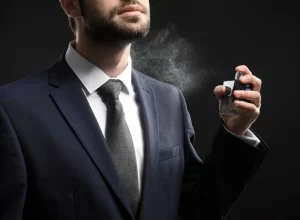
From Cowboy to Beanie: A Hat for Every Occasion
Hats have been an integral part of human culture for centuries, serving both practical and symbolic purposes. From protecting against the elements to making fashion statements, hats have evolved over time to cater to various occasions and trends. This article takes a closer look at the journey of hats through history, exploring their diverse roles and the iconic styles that have emerged, from the rugged cowboy hat to the trendy beanie.
The Cowboy Hat: A Symbol of the Wild West
The cowboy hat is an iconic symbol of the American West, embodying the spirit of adventure, freedom, and rugged individualism. Originating in the 19th century, this wide-brimmed hat was designed to shield cowboys from the harsh elements of the open range. Its wide brim offered protection from the scorching sun, while its high crown provided insulation during colder nights. Made primarily from felt or straw, the womens cowboy hats were functional and durable, making it an essential accessory for those working in the demanding environment of ranching and cattle herding.
Beyond its practical utility, the cowboy hat became a symbol of cowboy culture, representing a unique blend of masculinity, resilience, and frontier life. This style has endured over the years, transcending its original purpose to become a fashion statement and a symbol of American identity.
The Top Hat: Elegance and Prestige
In stark contrast to the rugged cowboy hat, the top hat emerged as a symbol of elegance and prestige during the 18th and 19th centuries. Worn primarily by the upper class, this tall, cylindrical hat was an essential accessory for formal events and social gatherings. Constructed from materials such as silk, satin, and beaver fur, the top hat signified refinement and status.
The top hat’s association with high society made it a staple at weddings, operas, and other grand occasions. Its distinctive silhouette and luxurious materials set it apart, making it a lasting emblem of sophisticated fashion. While its prominence has diminished over time, the top hat remains a classic symbol of a bygone era of opulence and extravagance.
The Fedora: A Timeless Icon
The fedora, with its indented crown and front pinch, is another iconic hat that has transcended its origins to become a versatile accessory for various occasions. Originally designed for men in the late 19th century, the fedora quickly gained popularity due to its practicality and versatility. Made from materials like wool, tweed, and even straw, the fedora offered protection from the weather while adding a touch of style.
In the early 20th century, the fedora became associated with film noir characters, adding an air of mystery and intrigue to its allure. Stars like Humphrey Bogart and Frank Sinatra contributed to its popularity, making it a symbol of rugged charm and sophistication. Over time, the fedora crossed gender boundaries, with women adopting the style as a statement piece. Despite shifting fashion trends, the fedora remains a timeless accessory that can effortlessly elevate an outfit for both formal and casual occasions.
The Beanie: Casual Comfort and Urban Chic
In stark contrast to the grandeur of the top hat and the adventurous spirit of the cowboy hat, the beanie represents a more relaxed and contemporary style. Originating as a functional head covering for outdoor activities and athletic pursuits, the beanie has evolved into a symbol of casual comfort and urban chic.
Made from knit fabric or wool, the Black Beanie offers warmth and practicality, making it a staple for colder climates. Its simplicity and versatility have contributed to its widespread popularity among various demographics. From skateboarders to fashion-forward individuals, the beanie has become a go-to accessory for a range of everyday activities.
Hats have come a long way, evolving from functional headgear to iconic fashion statements that reflect cultural shifts and individual preferences. From the enduring cowboy hat, which symbolizes the untamed spirit of the American West, to the elegance of the top hat and the versatile fedora, each style carries its own unique history and connotations. The beanie, with its contemporary appeal and casual comfort, rounds out the spectrum, catering to modern sensibilities.
Whether for protection, style, or cultural significance, hats have demonstrated their ability to adapt to changing times while retaining their essence. As fashion continues to evolve, it’s clear that hats will remain an essential part of our wardrobe, continuing to reflect the spirit of each era and providing a hat for every occasion.

